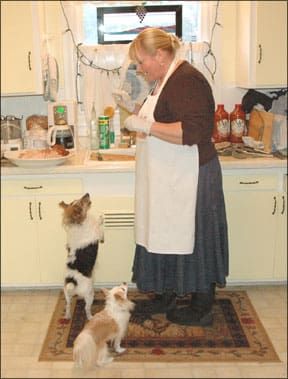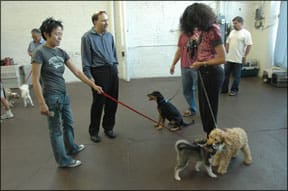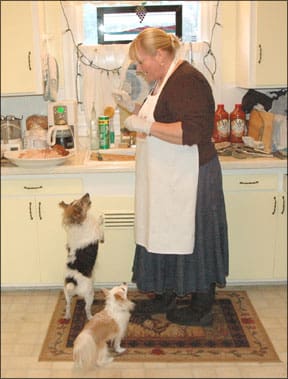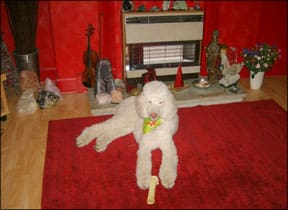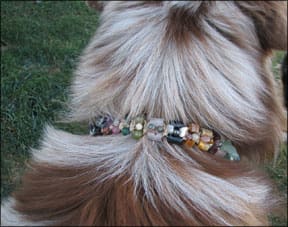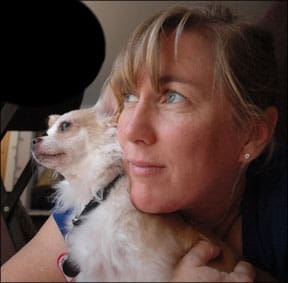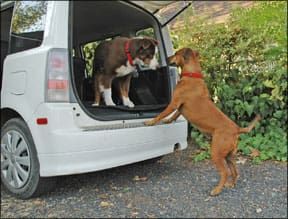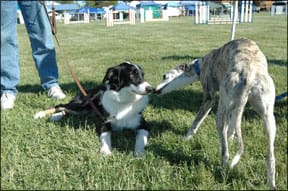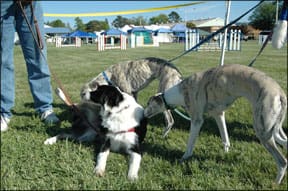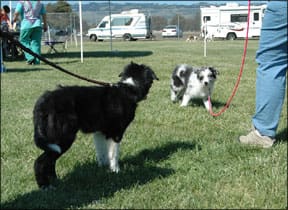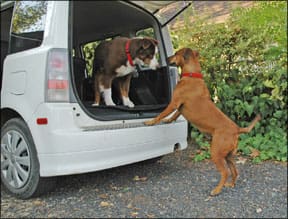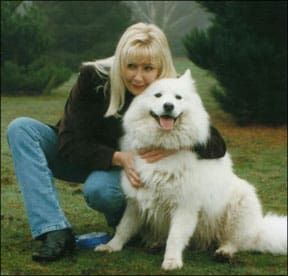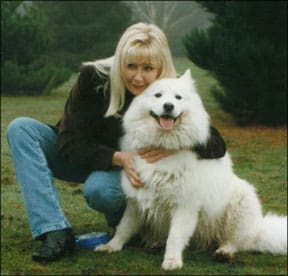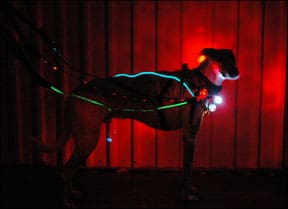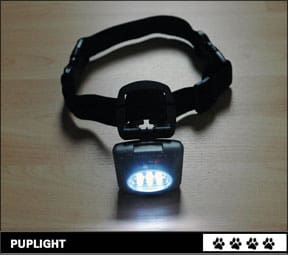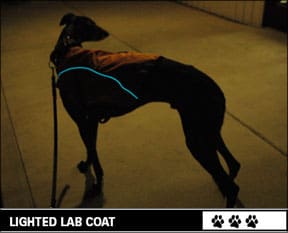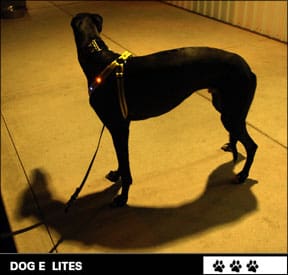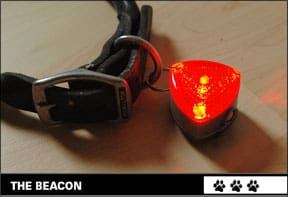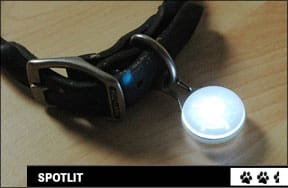Can exposure to color change your health? What about tapping on key acupuncture points or other body parts? And is there any way to focus or concentrate naturally occurring energy so that it has a more therapeutic effect?
Veterinarians and other healthcare practitioners who experiment with energy healing deal with these and related questions when they address the “etheric body,” the invisible part of the patient that is also described as the vital or energy body. Improving the etheric body’s energy flow or state, they say, stimulates a self-healing mechanism that encourages the body to repair itself, often in record time.
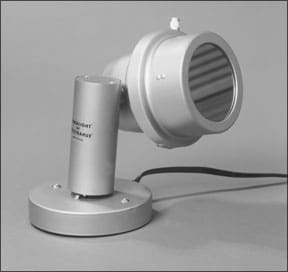
288
In the past four issues, we’ve described a number of “energy medicine” tools such as homeopathy, flower essences, Reiki, crystals, acupuncture, and therapeutic touch. In this article, the conclusion of this series, we’ll describe several more modalities that can be used alone or in combination with conventional or alternative therapies and are widely considered to be free from adverse side effects.
Healing with color
When photobiologist John Ott pioneered time-lapse photography, he discovered the vital role that full-spectrum natural light plays in the development of plants and animals. He also discovered that color can have a profound effect at the cellular level.
Whenever he photographed living cells under electron microscopes, Ott noticed that changing the color filters on his camera lens changed the cells’ behavior. When he was hired to document the effects of pharmaceutical drugs on living cells, lens color changes had a more dramatic effect on the cells than the drugs did.
In animal research, prolonged exposure to a single color has caused female reproductive problems, fur loss, toxic symptoms, digestive disorders, male sterility, abnormal bone development, abnormal body weight, and cataracts.
However, short-term exposure to colors has had the opposite effect. In the late 19th century, English physicians discovered that exposure to light of different colors caused measurable improvements to their patients. Years later, scientists in Europe and elsewhere explored the ways in which exposure to color influences health. In the United States, color was a popular healing therapy until the 1940s and ’50s, when lobbying efforts by conventional physicians convinced the U.S. Food and Drug Administration to make the use and sale of medical color projection equipment illegal.
Many physicians will tell you that color therapy is still on the fringes of modern medicine, but look at some of the applications used today:
• Maternity wards of major hospitals routinely use blue light to treat neonatal jaundice.
• NASA uses red light to speed the healing of injuries in space.
• The U.S. Navy uses colored light to treat injuries.
• Medical research shows that blue light suppresses the metastasis of melanoma cells in mice, red light has anti-inflammatory effects, and full-spectrum light, which contains all colors, is a successful treatment for depression caused by seasonal affective disorder.
• Light-emitting diodes (LEDs) are common in medical devices that relieve pain and fight infection with red, blue, and other colors.
William Campbell Douglass, MD, was newly interested in color treatments when a patient came to him with a large ulcer on the side of her leg. The ulcer was half an inch deep and full of pus – and had plagued the patient for five years. She had tried salves, antibiotics, and various surgical interventions (debridement or scraping) with no improvement.

Julianne Bien
288
As he describes in his book Color Me Healthy, Dr. Douglass treated the ulcer by shining indigo light on it. The patient continued this therapy at home twice a day, one hour at a time, and soon new skin covered the open sore. Within a week she was free from pain for the first time since the ulcer developed, and six weeks after her initial treatment she returned to show Dr. Douglass a leg that had almost completely healed.
“I know it’s hard to believe,” he says, “but color therapy really works. And not just for external wounds. It also works for many internal ailments at which modern medicine just throws useless drugs and surgery.”
Many veterinarians, ophthalmologists, and other healthcare professionals who treat patients with color follow the guidelines of the Dinshah Health Society, which publishes books and instructions for using Spectro-chrome equipment consisting of color filter material and a light source such as a slide projector, lamp, flashlight, or the sun.
Each color has its own wavelength and frequency. Red, orange, and yellow are stimulating; green is said to bring the body into balance; and blue, indigo, and violet are at the calming or sedating end of the spectrum. The Spectro-chrome system also uses lemon, turquoise, purple, magenta, and scarlet. As explained in Darius Dinshah’s book Let There Be Light, every physical condition has its own protocol or sequence of color treatments, and drinking water can be treated with color for internal and external application.
A more elaborate and expensive color therapy system is the Lumalight, developed by Spectrahue Light & Sound, which shines light through mineral-based glass color lenses.
Rainbow of benefits
Lynn Younger, who lives in Sedona, Arizona, has worked with dogs and other animals for 10 years using “colorpuncture,” a European modality of acupuncture that substitutes concentrated Lumalight for acupuncture needles. “I’ve treated thousands of canines, most commonly for painful conditions like arthritis or hip dysplasia, infections, and emotional issues,” says Younger. “Usually the animals present with conditions that have been treated by conventional veterinary medicine without success, and the application of color almost always triggers improvement.”
Ojito, a Chow-mix belonging to Eliza-beth Heaney of Tucson, Arizona, pinched a nerve in her back and was in too much pain to eat or drink for three days. “About 15 minutes into her color treatment,” says Heaney, “Ojito abruptly stood up and began to drink from her water dish. By the end of the treatment she was eating hungrily. The change was remarkable, from barely lifting her head to walking around and wagging her tail. She’s been fine ever since.”
A fungal infection called Valley Fever is a serious problem in Arizona, and when it settled in her lungs, Kali, a nine-year-old Wheaten Terrier, coughed as often as 20 times a minute. “She did not respond to prescription drugs,” says her owner, L. Enlow, “but color therapy stopped her coughing, and a chest X-ray taken after a few months of ongoing color treatments showed that the virus was greatly reduced.”
Color therapy doesn’t have to involve elaborate equipment, says Younger. “You can tonate water in colored glass jars or bottles simply by placing them in the sun. For a dog with arthritis, you could keep water in a red glass container and then apply it as a spray or wash. You could also have the dog lie on a red towel. There are many ways to expose dogs to color. In my experience, animals respond much more quickly to color therapy than humans do. They don’t try to figure out whether or how it works. They just enjoy it.”
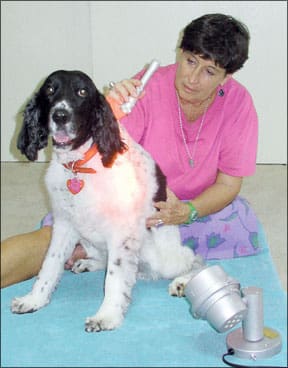
288
Annie, a 16-year-old Bichon Frise belonging to Linda McGuire in Wethersfield, Connecticut, seems to enjoy her Spectro-chrome tonations. “She goes right for the light and lies under it for her snooze,” McGuire says. “The colors help with her kidney disease and other symptoms, and she actually positions herself for best results. Animals are so smart! My vet doesn’t want to know the details, but he says I should keep doing whatever I’m doing because it’s working so well.”
Pamela Fisher, DVM, a holistic veterinarian in North Canton, Ohio, has treated almost a hundred canine patients with Lumalight color during the past year, most of them for skin, digestive, emotional, or respiratory problems.
“When cooling blues are applied to hot spots or other inflamed skin conditions,” she says, “there is an instant calming and skin color change, from red and irritated to more normal, which starts the healing process.”
Color therapy tonations usually last half an hour to an hour, but Dr. Fisher‘s single-color Lumalight treatments seldom take more than a few seconds. “The results are actually that fast,” she says.
One of Dr. Fisher’s patients is Michael, a 16-year-old West Highland White Terrier belonging to Lyn Sabino of Canton, Ohio, who has chronic lung problems. His bronchial dilating medication was recently changed by another veterinarian, and after two doses on the new medicine, he grew weak and struggled for breath.
“His condition was serious,” says Dr. Fisher, “and it was getting worse. I applied cooling blue color to his chest and heart area, and within a few seconds his labored breathing calmed and the color of his mucous membranes improved, becoming more pink due to better oxygenation. He continued to improve, and I sent him home with color-treated water for continued application.”
Dr. Fisher reports that separation anxiety, thunder phobia, fears, incessant barking, inappropriate urination, and other emotional or behavioral issues also respond quickly to color therapy.
BodyTalk and AnimalTalk
Australian chiropractor John Veltheim, an expert in applied kinesiology, acupuncture, Reiki, osteopathy, sports medicine, counseling, and philosophy, combined all of these interests when he developed Body-Talk, a system in which the practitioner uses muscle testing (kinesiology) to ask the client’s body specific questions about what parts need treatment first. This approach, says Dr. Veltheim, is what sets BodyTalk apart from other healing systems and makes every BodyTalk session unique.

288
Once the initial organ or body part has been identified, the practitioner asks a series of yes or no questions to discover what that part needs, such as a link to a specific gland or organ. As soon as the link is identified, the practitioner uses gentle hand contact and tapping to correct imbalances and speed healing.
“Lightly tapping on the skull,” says Dr. Veltheim, “seems to activate the brain centers in a way that causes the brain to consciously reevaluate the state of health in the bodymind. Tapping on the heart completes the process by sending patterns of energy and information to every cell in the body.”
Five years ago, Ange Trenga of Missoula, Montana, became a BodyTalk instructor and practitioner for people and animals. AnimalTalk is a version of BodyTalk designed for pets and other animals.
One AnimalTalk client had a six-year-old Golden Retriever with severe skin problems. The dog’s skin was raw all over her body, says Trenga, “especially on her belly and in her ears, and it was made worse by her constant itching, chewing, and licking. She was losing huge chunks of fur. She was also dehydrated because she refused to drink water. The first thing that happened when we started tapping was that she ran into the kitchen and drank several bowls of water.”
Using kinesiology, Trenga determined that the dog was reacting to corn in her food, grass outside, and several cleaning products in the house. She used AnimalTalk to strengthen the dog’s immune system, and when she returned two weeks later, the dog’s fur had grown back, her skin looked normal, her chewing had completely stopped, and the itching had almost disappeared. After their second session, the dog needed no further treatment.
“One of the things that I love about AnimalTalk,” she says, “is that you don’t have to work with the dog every week for a year. In most cases, two to four sessions correct the problem, and the dog’s body holds the memory of these adjustments so that no additional treatment is needed.” Trenga has used AnimalTalk to help dogs recover from accidents and injuries.
AnimalTalk training used to be available only to BodyTalk practitioners, but now pet lovers with no BodyTalk experience can take AnimalTalk workshops that demonstrate basic techniques for dealing with pet health problems, behavioral issues, and emergencies.
“Anyone can learn it, including kids,” says Trenga, who teaches AnimalTalk around the world. “It is a wonderful support therapy that’s compatible with veterinary care, and it can even neutralize old fears and traumas. My favorite example of this is a dog who was terrified of going out of the house because he had been attacked years before by another dog. The sight of his leash made him cower and tremble, and when he went outside to eliminate, he didn’t waste a minute and raced back in. At the end of our single session, he explored his backyard without any fear, and when his owner took him for a walk, he was completely relaxed and confident. It was as though the attack had never happened, and his fear has never returned.”
Emotional Freedom Techniques (EFT)
Gary Craig isn’t a trainer or veterinarian. In fact, he doesn’t even have a dog. But his acupressure tapping procedure called EFT (Emotional Freedom Techniques) has transformed the lives of countless dogs and their human companions.
EFT is one of several meridian therapies, so called because they are said to release blocks along the same energy paths used in acupuncture. According to Craig, the combination of focused thought and acupressure tapping releases energy blocks that contribute to behavioral problems, anxiety, pain, or illness while simultaneously releasing their underlying emotional causes.
Meridian therapies are often complicated, but EFT is so easy to use that small children teach it to one another. “Don’t let its simplicity fool you,” says Craig. “It’s used by thousands of healthcare practitioners, including medical doctors and veterinarians. In many cases, chronic and acute symptoms have resolved in a matter of minutes.”

288
EFT’s tapping points and basic protocol are clearly described in the free EFT manual that is distributed online in 19 languages, and Craig’s inexpensive seminar DVDs provide impressive demonstrations. EFT classes and workshops are taught in several countries, and more than 50 books by a variety of authors describe the technique. These are remarkable statistics for a procedure that is only 10 years old.
Animals can be treated directly, by tapping on their acupuncture meridians while focusing on their condition, or they can be treated surrogately, by proxy. That is, you can tap on yourself while focusing on the dog.
Catherine O’Driscoll, an EFT practitioner in Scotland, did this with her Golden Retriever, Sophie, who had suffered from arthritis for several years.
“We helped her with nutrition, herbs, homeopathy, and acupuncture, but the arthritis never completely went away,” she says. “Finally, when she was 14, her front paws swelled up and knotted so much that they became deformed. I tapped on myself for her, and I couldn’t believe my eyes. The paws went down as though they were balloons letting out air. It was like a horror story special effect in reverse.
“I didn’t trust myself not to have imagined it,” O’Driscoll continues, “but Sophie was good enough to manifest the swollen paws a few weeks later while my sister was visiting. I again tapped for her while my sister and husband looked on. Again, we saw the swelling subside in front of our eyes. Sophie lived to the grand age of 17, and her arthritis never returned. She had also become deaf by age 14, but thanks to this wonderful energy therapy, she was able to hear again for the last years of her life.”
Christina Bequette, an EFT practitioner in Deer Trail, Colorado, first tried the technique with Stella, a 14-year-old Australian Shepherd/Red Heeler mix belonging to Patty Kemp-Cobb in Carbondale, Colorado. Stella constantly whined and pressed her head and body against Kemp-Cobb. “She had a reputation for biting and didn’t like to be touched,” says Bequette, “so I expected resistance, but Stella willingly let me tap on her, as if she knew I was there to help.”
Bequette focused on thoughts of not being loved, having things to say, and being ignored, and whatever else she could think of that might be a factor. “The best result came after I referred to the issue of Stella feeling invisible despite being recognized for her excellence as a cattle dog. The session lasted about 20 minutes, and to everyone’s astonishment, Stella quit whining. Not only that, but from then on she acted much more gentle and loving, no longer snapping or biting when touched. It was quite exciting to her human family, and now, two years later, they still talk about her transformation. Stella is almost 16, and her whining habit never came back.”
In 2002, California artist Lee Lawson was bothered by a neighbor’s dog, who barked all night, every night, for months. “The neighbor claimed not to hear it,” she says, “and so it went on and on and on. Then one night I did EFT on the situation. I focused on being a vibrational match to the barking dog, deeply and completely loving and accepting myself and the dog. The barking stopped immediately. About three hours later it started again and I tapped again. It stopped, and that was the last time the dog barked at night.”
Lawson also used surrogate tapping when she got a new puppy for everything from housebreaking (immediately accomplished) to sleeping through the night (which a single EFT treatment took care of). “I even used EFT to get her to pee on command after she noodled around for 15 minutes in the freezing cold,” says Lawson. “I’d start a single round of tapping for this and she would go before I could finish.”
Dozens of EFT practitioners in the U.S., Canada, Europe, South America, Asia, and Australia responded to my online requests for reports about how EFT has helped their dogs. They described EFT’s success with treating asthma, diabetes, heart disease, arthritis, kennel cough, injuries, and other physical ailments, as well as how rescued dogs adjusted to their new homes; how dogs who began fighting when a beloved family member moved out live in harmony again; how dogs overcame their fear of vacuum cleaners, thunder, and fireworks; how formerly aggressive dogs now stay calm and focused; and how competition dogs overcame physical or training problems to win their events.
Zero Energy Balancing (ZEB)
Three years ago, agility competitor Melissa Chandler of Galena, Ohio, suffered injuries in a car accident that hindered her mobility. She was referred to a massage therapist who used Zero Energy Balancing, or ZEB.
“I was amazed at how much this helped, and I purchased a ZEB unit for myself,” she says. “Then I learned about how the ZEB helps dogs from my holistic veterinarians, as they both use it in their practice.”
The ZEB, a tube of extruded plastic pipe containing diodes, was invented by retired aerospace engineer Cliff Stumbaugh. It comes in several models costing $150 to $450, the most popular of which is the $250 Ultimate Biofield ZEB, which Stumbaugh describes as an all-purpose energy device with a frequency range of 8Hz – 650Hz. “Its usage is ideal for balancing meridians and chakras, breaking up energy blockages, correcting general body dysfunctions, and using biofield resonance therapy,” he says. “It has an automatic mode of operation and comes complete with three auto-program modules.”
There are no moving parts in the ZEB, and it has no power source other than the naturally occurring energy that flows around it. “ZEB has a bioplasma radiation field around it comparable to a magnet,” the inventor explains. “It perpetuates itself by circulating plasma energy around itself from the output back to its input in one continuous process.”
What exactly is zero energy balance? According to Stumbaugh, a healthy human or animal biofield consists of flowing, unpolarized bioplasmic cells. When the biofield is blocked, negative, polarized bioplasmic cells exist. “The ZEB’s energy beam network attracts the negative bioplasmic cells from the subject’s biofield and accelerates these through the ZEB unit via its tuned cavity ring-down processor. Here the negative, polarized bioplasmic cells are depolarized and discharged out of the unit, thus creating a zero balance.” (And this is one of the manual’s simplest explanations!)
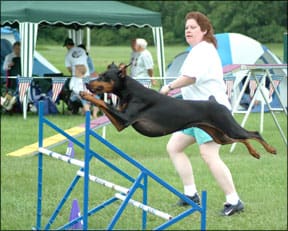
288
“I use the ZEB on my dogs daily,” says Chandler. “You can use it to prevent injuries from becoming chronic problems, help with autoimmune and endocrine dysfunctions, assist digestion, treat diarrhea or constipation, test foods and supplements, and speed the healing of wounds or surgical incisions. The ZEB can be used to rid the system of pathogens, bacteria, and viruses.”
Programming the ZEB involves sticking a small note on one side of the tube and placing a cotton swab saliva sample from the person or animal being treated on the other. The note can list one or more numbers from the accompanying frequency/vector manual, or you can simply write the desired result in a circle. Then you move the tube over the affected body part for 10 to 15 seconds or, to treat the entire body, leave it next to the resting patient for 10 to 30 minutes.
This procedure is so unusual, it’s downright weird. Can it possibly work?
Betsey Lynch of Delaware, Ohio, believes it does. “I am an avid agility participant,” she says. “I bought my first ZEB in January 2005, prior to which two of my holistic vets used the ZEB on my dogs. I now have four ZEBs and use them all every day on my four Cavaliers and one Papillon to help with muscle repair and recovery from training and competition.”
Lynch’s current agility star is six-year-old Trouble. “Trouble has syringomyelia, or SM, which is a neurological condition that affects Cavaliers and some other toy breeds,” she says. “With daily use of the ZEB, Trouble has been able to run successfully and remain an active and happy little dog. I keep one ZEB dedicated to distance healing of the SM alone and believe it has kept her symptoms from progressing.”
Jan Knode in Apple Creek, Ohio, has been styling dogs since 1989, teaching and training in agility since 2001, and competing since 2002. She uses the ZEB to treat pain and injuries, eradicate skin parasites, and treat yeast infections.
“Last July a holistic vet who does energy work used the ZEB on my seven-year-old Doberman,” says Knode. “My girl was very sick and slept almost all the time. After the vet used the ZEB on her, for about an hour, off and on, Sere played in the van all the way home! Her body began to heal and she felt great. Since then, she has a lot more energy for agility and playing ball and Frisbee. It’s so nice to have my girl back.”
The ZEB is one of several devices that are said to correct physical and emotional conditions by concentrating or redirecting energy. From what we can determine, especially because it does not plug into an electrical outlet, use batteries, or have an external power source, the ZEB is unlikely to cause harm. Like the other energy therapies described here and in the four preceding articles in this “energy medicine” series, it might work or it might do nothing, but either way, it isn’t likely to damage the patient.
CJ Puotinen, a frequent Whole Dog Journal contributor, is the author of The Encyclopedia of Natural Pet Care, which describes several energy healing techniques. She is also an EFT instructor and practitioner.








